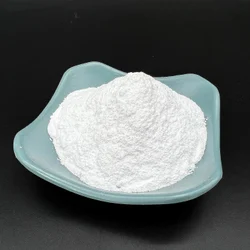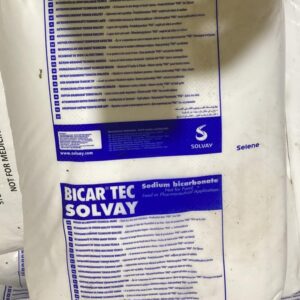Detergent chemicals
Showing all 2 results
Showing all 2 results
Detergent Chemicals: The Backbone of Modern Cleaning and Industrial Processes
Detergent chemicals have revolutionized the way we clean, process materials, and maintain hygiene in both domestic and industrial settings. These compounds, primarily surfactants, are designed to break down and remove dirt, oils, and other impurities from a variety of surfaces. Their significance extends far beyond household cleaning, playing a critical role in industries ranging from pharmaceuticals to textiles, food processing, and even heavy manufacturing. This essay delves into the composition, types, applications, and environmental impact of detergent chemicals, highlighting their indispensable role in modern society.
Composition and Mechanism of Action
At the heart of every detergent is a surfactant, a chemical that reduces the surface tension of water, enabling it to more effectively interact with and lift away contaminants. Surfactants are amphiphilic molecules, meaning they possess both hydrophilic (water-attracting) and hydrophobic (water-repelling) parts. This dual nature allows them to emulsify oils and hold dirt in suspension, preventing re-deposition on cleaned surfaces.
Detergent chemicals can be broadly categorized based on the charge they carry: anionic, cationic, nonionic, and zwitterionic (amphoteric) surfactants. Each type has distinct properties and applications. Anionic surfactants, such as sodium lauryl sulfate (SLS) and linear alkylbenzene sulfonate (LABS), are the most widely used due to their excellent cleaning power and ability to produce foam. They are particularly effective in breaking down grease and are commonly found in household detergents, shampoos, and industrial cleaners.
Cationic surfactants, like benzalkonium chloride, are positively charged and are often used as disinfectants and fabric softeners. Their antimicrobial properties make them ideal for use in sanitizing agents and conditioners. Nonionic surfactants, such as alcohol ethoxylates, do not carry any charge, making them less likely to cause irritation or excessive foaming. These surfactants are preferred in formulations where mildness is key, such as in personal care products and certain industrial processes. Zwitterionic surfactants, like cocamidopropyl betaine, carry both positive and negative charges, depending on the pH of the solution. They are commonly used in products where a balance between cleaning power and gentleness is required.
Industrial Applications
The versatility of detergent chemicals makes them indispensable across a wide range of industries. In the textile industry, for example, detergents are used not only to clean fabrics but also to prepare them for dyeing and finishing processes. The removal of oils, waxes, and other impurities from raw fibers ensures uniformity in color and texture, which is critical for high-quality textile production.
In the food processing industry, detergents are vital for maintaining hygiene and preventing contamination. Equipment used in food production must be thoroughly cleaned to remove residues that could harbor harmful bacteria. Detergent chemicals, often combined with sanitizers, ensure that surfaces are not only clean but also free of pathogens.
The pharmaceutical industry also relies heavily on detergent chemicals. In drug manufacturing, maintaining a sterile environment is crucial. Detergents are used to clean equipment, containers, and even the production facilities themselves. The ability of detergents to remove organic and inorganic contaminants helps prevent cross-contamination and ensures the purity of pharmaceutical products.
In heavy manufacturing and metal processing, detergents are used to clean metal surfaces before and after processing. This is essential for removing oils, dirt, and scale, which can interfere with further processing such as welding, painting, or coating. The use of detergent chemicals in these industries helps in extending the life of machinery by preventing the buildup of corrosive substances.
Environmental and Health Considerations
While detergent chemicals are incredibly effective, their widespread use has raised concerns regarding environmental and health impacts. Anionic surfactants, which are the most commonly used, can persist in the environment and are not always fully biodegradable. This can lead to the accumulation of these chemicals in water bodies, where they can harm aquatic life by disrupting the balance of ecosystems. Nonionic surfactants, while generally more biodegradable, can still pose environmental risks, particularly if they break down into more toxic substances.
The production and use of detergent chemicals can also have health implications. Some surfactants, such as SLS, can cause skin irritation, especially with prolonged exposure. This has led to the development of milder alternatives, such as sodium laureth sulfate (SLES) and natural surfactants derived from coconut oil. Additionally, there is a growing trend toward the use of eco-friendly detergents, which are formulated to be biodegradable and free of harmful additives like phosphates and synthetic fragrances.
Conclusion
Detergent chemicals are a cornerstone of modern cleaning and industrial processes. Their unique properties make them versatile and effective in a wide range of applications, from household cleaning to complex industrial processes. However, their environmental and health impacts cannot be overlooked. As awareness of these issues grows, the industry is moving toward more sustainable practices, with the development of greener, biodegradable detergents that minimize harm to the environment and human health. The continued evolution of detergent chemistry will undoubtedly play a critical role in ensuring that we can maintain the cleanliness and hygiene standards required by modern society, without compromising the health of our planet.





